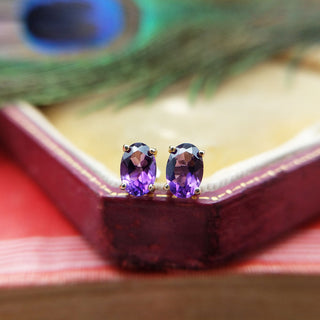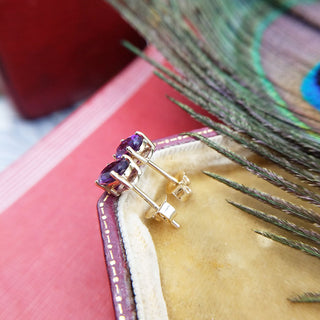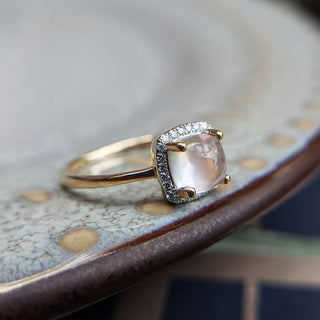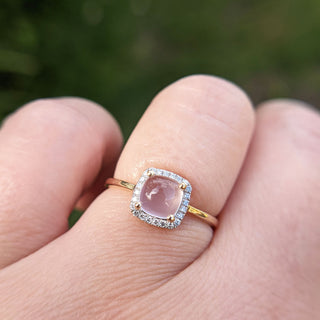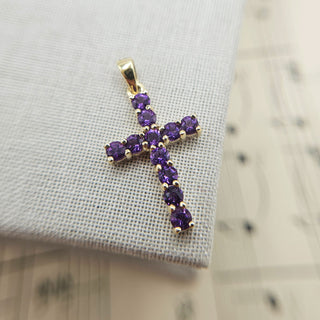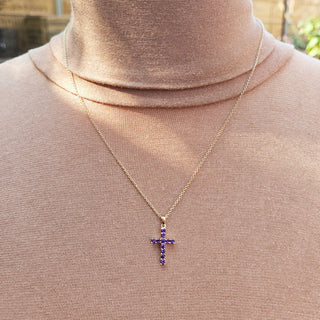About Amethyst
Amethyst is a type of quartz, and quartz is one of the most abundant minerals in the Earth's crust. Quartz is found in a range colours from colourless to black and everything in between, but amethyst is very specifically the violet to purple form of quartz. We've written a brief exploration of this timeless and ever-popular gemstone below:
Colour: Amethyst is primarily recognized for its violet to purple hues. This colouration results from trace amounts of iron within the quartz crystal structure along with exposure to natural or man-induced radiation. The finest amethyst exhibits a deep, royal purple color, while lighter shades are also common.
Hardness: With a hardness rating of 7 on the Mohs scale, amethyst is sufficiently durable for use in jewellery. However, care should be taken to avoid exposing it to harsh abrasives or sudden temperature changes.
Lustre: Amethyst possesses a vitreous lustre, giving it a glossy appearance when well-polished. Its natural brilliance enhances its visual appeal.
History: Amethyst holds a rich history dating back to ancient civilizations. It was considered a gemstone of high value and was often associated with royalty and spirituality. Its name is derived from the Greek word "amethystos," meaning "not drunken," as it was believed to protect against intoxication.
Locations/Deposits/Geology: Amethyst is commonly found in geodes and volcanic rock cavities. Major deposits are located in Brazil, Uruguay, Zambia, and Russia. Brazil, in particular, produces some of the world's most prized amethyst specimens.
Common Treatments: Irradiation is a common treatment for enhancing the color of amethyst. Typically, this process involves exposing pale or light-colored amethyst to controlled doses of radiation, which can transform it into a more desirable deep purple or violet hue.
Value: The value of amethyst is primarily determined by its color, clarity, size, and overall quality. Deep purple amethyst of fine quality commands higher prices, while lighter shades are more affordable. Extremely large or rare amethyst specimens can also be of significant value to collectors.
Common Jewellery Applications: Amethyst is frequently used in various jewellery pieces, including rings, necklaces, earrings, and pendants. Its appealing color and affordability make it a popular choice for both classic and contemporary designs.
Birthstone: Amethyst serves as the birthstone for the month of February, symbolising clarity, tranquility, and protection. It is often given as a meaningful gift for individuals born during this month.
Meanings: Beyond its aesthetic appeal, amethyst has been associated with attributes such as calmness, balance, and sobriety. It is often considered a stone of meditation and spiritual growth, believed to promote inner peace and clarity of thought. It is also the stone of St Valentine and faithful lovers, the Romans dedicated it to their God Neptune AND it's also considered an ecclesiastical Bishop's stone.
In conclusion, amethyst's distinctive purple color, historical significance, and spiritual symbolism contribute to its enduring popularity as a cherished gemstone in the world of jewellery and metaphysical beliefs. Its versatility and affordability, combined with its inherent beauty, ensures its continued prominence in the gemstone market.



